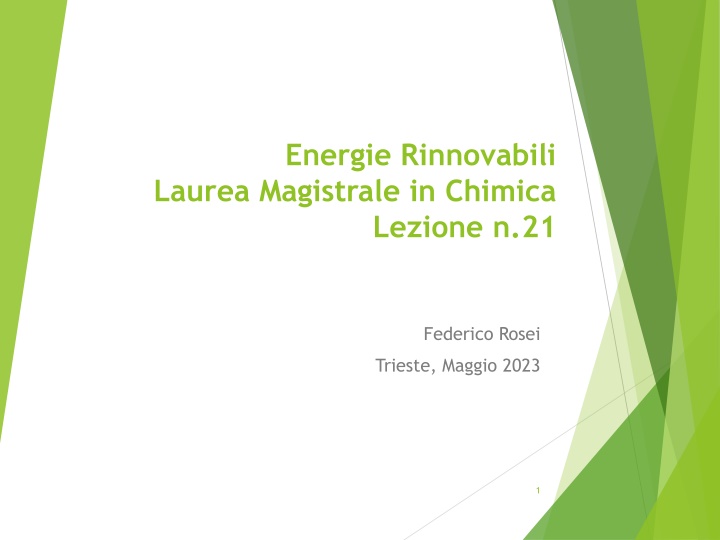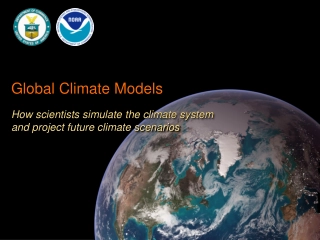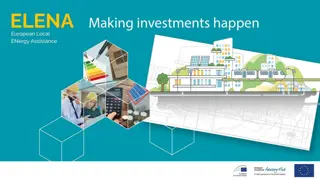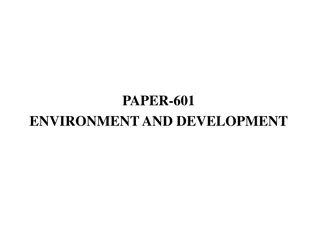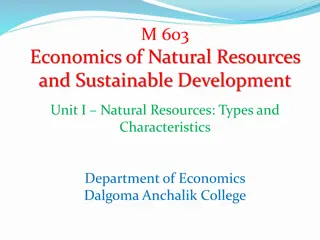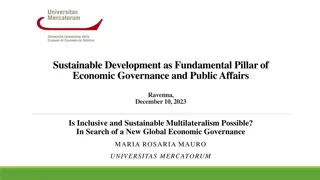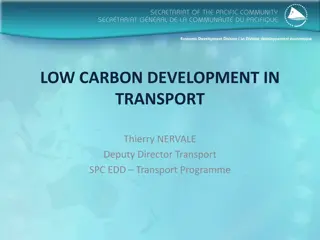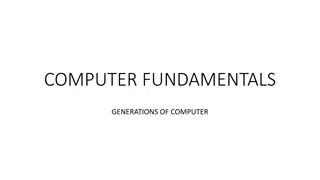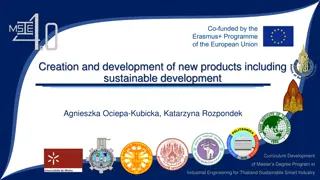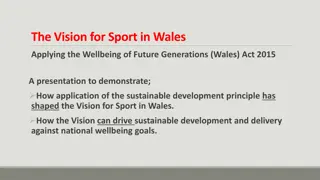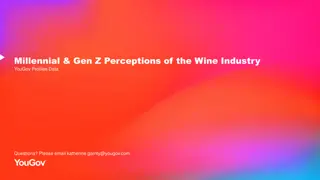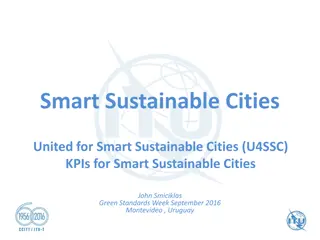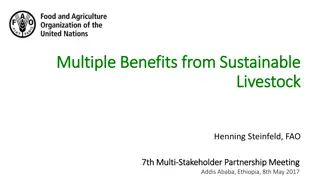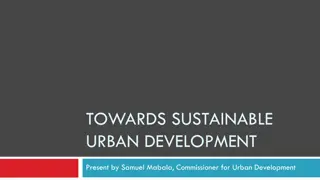Developing Sustainable Models for Future Generations
Concept of sustainable development and the Energy Trilemma in the context of global challenges like increasing energy consumption and population growth. Discover the interconnectedness between energy, environment, and economy, and the impact of human activities on achieving sustainability goals through the lens of the Lotka-Volterra model.
Download Presentation

Please find below an Image/Link to download the presentation.
The content on the website is provided AS IS for your information and personal use only. It may not be sold, licensed, or shared on other websites without obtaining consent from the author.If you encounter any issues during the download, it is possible that the publisher has removed the file from their server.
You are allowed to download the files provided on this website for personal or commercial use, subject to the condition that they are used lawfully. All files are the property of their respective owners.
The content on the website is provided AS IS for your information and personal use only. It may not be sold, licensed, or shared on other websites without obtaining consent from the author.
E N D
Presentation Transcript
Energie Rinnovabili Laurea Magistrale in Chimica Lezione n.21 Federico Rosei Trieste, Maggio 2023 1
n.21 Is it possible to develop a model for sustainability?
UN Definition of Sustainable Development: Meeting the needs of the present without compromising the ability of future generations to meet their own needs. 3
Sustainable vs. Development A contradiction in terms??? 4
The Energy Trilemma What is good for the economy, is bad for the environment 5
Energy, Environment & Economy Which variable drives the other ones? Energy or Economy? 6
Connection between energy & other SDGs 1 No poverty 2 Zero hunger 9 Industry, innovation & infrastructure, 10 Reduced inequalities 11 Sustainable cities & communities 12 Responsible Consumption & production 13 Climate Action 15 Life on land 3 Good health & well-being 4 Quality education 7 Affordable & clean energy 5 Gender equality 6 Clean water & sanitation 8 Decent work & economic growth 7
World Energy consumption increases continuously Oil (in general: *non- renewable* fossil fuels) is still the most widely used Fuel of modern society World population increases at a rate of ~200.000 inhabitants per day (70 million per year) Source: Physics Today
Population Key towards attaining sustainability, or failing More people need: more energy, more food, more clean water, more jobs, more health services More people will: pollute more, create more waste, increase carbon emissions
Lotka-Volterra model Lotka-Volterra equations / predator-prey equations: pair of first-order nonlinear differential equations used to describe dynamics of biological systems in which two species interact: predator & prey 10
Variables in the model x is the population density of prey; y is the population density of some predator; t represents time; The prey's parameters, A and B, describe, respectively, the maximum prey per capita growth rate, and the effect of the presence of predators on the prey growth rate. The predator's parameters, C, D, respectively describe the predator's per capita death rate, and the effect of the presence of prey on the predator's growth rate. 11
Sharks vs. fish Typical behaviour: oscillating populations of predator vs. prey 12
St. Paul island reindeer Reindeer: predator Grass: prey St Paul island reindeer 14
Simplest case: hunter gatherer society Humans are the predator Food is the prey 15
Sustainability model Population: Predator Energy: Prey This would be the simplest version. However there are other variables, some of which also behave as prey or predator: food (prey), raw materials (prey), available surface (prey), waste, economic indicators, carbon emissions, etc. 17
Variables in the model Time t is the only independent variable H is human population (predator) F is food (prey) S is available surface (prey); F should be proportional to S. R is raw materials (prey) E = Ef + Er Ef is fossil fuels (prey); Er is renewable energy (prey) W is waste Ce is greenhouse gas emissions (could be simplified as CO2) P is global domestic product D is level of dissatisfaction 18 E is extreme events (random variable)
Brownian motion Brownian motion is the random movement of particles in a liquid or gas. The movement occurs even if no external forces are applied. Particles never stay completely still. Movement occurs because of particles colliding with each other in a liquid or gas. Similar to how billiard balls hitting cause them each to change direction, the same is true of molecules. Particle one hitting particle two will cause both particles to shift their momentum (direction and speed). 19
Random walk Brownian movement is often modeled using a random walk . The distance of a particle from its starting position follows a Gaussian distribution, with the width of the Gaussian increasing over time => as time goes on, the particle is more likely to be further away from its starting location. 20
Surface diffusion: a 2 D random walk ED = 0exp(-ED/kT)
Surface diffusion ED hopping rate: h = h0exp(-ED/kT) ( x)2 = 2 ht random walk: T1 T2 - RMS jump length P x tracer diffusion coefficient: x D = ( x)2 /2t D0 ED ln D D = D0exp(-ED/kT) with D0=h0 2/2 1/kT
Einstein and Brownian Motion Albert Einstein published a paper in 1905 that described in precise detail how the motion that Brown had observed was a result of the pollen being moved by individual water molecules. This description of Brownian motion served as definitive confirmation that atoms and molecules actually exist, and was further verified experimentally by Jean Perrin in 1908. Perrin was awarded the Nobel Prize in Physics in 1926 for his work on the discontinuous structure of matter. 23
Brownian motion & financial markets Stock price movements form a random pattern. The prices fluctuate everyday resulting from market forces like supply and demand, company valuation and earnings, and economic factors like inflation, liquidity, demographics of country and investors, political developments, etc. Market participants try to anticipate stock prices using all these factors and contribute to make price movements random by their trading activities. 24
Black Scholes model The Black Scholes model assumes that the market consists of at least one risky asset, usually called the stock, and one riskless asset, usually called cash or bond. If V is the price of the option (derivative financial product) as a function of stock price S and time t, r is the risk-free interest rate, and is the volatility of the stock For a European call or put on an underlying stock paying no dividends, the equation is: 25
An Energy Crisis? The word crisis has a Greek origin. It means a divergence of paths, or choice This character means crisis in Chinese; it is a composite character Means Danger! => Means Opportunity => 26
